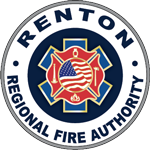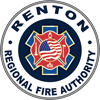WHEN THE FIRE ALARM SOUNDS
In the United States, business related fires account for losses totaling more than $4 billion annually. Prevention can greatly reduce injury and minimize loss. Employees and employers should work together to promote fire safety in the work environment.
PREVENTION
Eliminate fire hazards: Keep workspaces free of wastepaper and other combustibles, have damaged electrical cords replaced and do not overload circuits.
Extension cords can be dangerous. Never use an extension cord as replacement for permanent wiring and don’t run them under or behind furniture.
Keep all heat producing electrical appliances away from anything that can catch fire. Remember to always turn them off at the end of each day.
Pay attention to housekeeping issues. Don’t clutter exits, stairways, and storage areas with wastepaper, empty boxes, and other fire hazards.
Designate smoking areas away from combustible pathways or beauty bark. Where smoking is permitted provide non-combustible receptacles for cigarette ashes that are distinctly different from containers for waste.
Arson is the largest cause of fires in general office buildings. Keep a watch out for fire hazards and report and concerns or suspicious activities to authorities.
FIRE DRILLS PAYS OFF
It is important that everyone fully understands what to do in the event of a fire. There should be an evacuation plan designed for your building. The best way to test the evacuation plan is to participate in annual fire drills.
Fire drills are the best indication that during a fire emergency, the evacuation will go smoothly and successfully. People are more likely to perform behaviors correctly in an emergency if they have previously practiced that behavior. Participating in fire drills can save lives.
IF FIRE STRIKES
Sound the building alarm to notify your co-workers no matter how small the fire, close the door if possible, to contain the fire, and then leave the area quickly.
Make certain your co-workers are evacuating the area. Also make certain 9-1-1 has been called to get help on the way.
If there is a lot of smoke, crawl low underneath it and test doors for heat before you open them. If one of your escape routes can’t be used safely, go to your second exit. Once outside, go to the assigned meeting place for your building. Follow the instructions of fire and security personnel. Stay out of the way, and do not go into the building until they say it is safe.
EMPLOYEES SHOULD
- Learn the locations of at least two exits from all work areas.
- Know where the nearest fire alarm is and how to use it.
- Always participate in fire drills.
- Know the exact address of their workplace.
EMPLOYERS SHOULD
- Schedule and conduct fire drills for all shifts and employees.
- Conduct regular fire drills.
- Post building evacuation plans.
- Discuss evacuation plans with new employees.
- Include disabled employees in the planning process.



